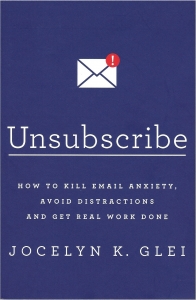The one sentence summary
Most people can reduce anxiety and get more real work done by being disciplined about their approach to email.
WHAT THE BOOK SAYS 
- This is all about how to kill email anxiety, avoid distractions and get real work done. It is divided into 4 parts: psychology, strategy, style and superpowers (prescriptive approaches).
- The rat brain makes email addictive. In the 30s, psychologist B. F. Skinner tested rats with fixed and variable rewards. People are more motivated when they think they might get a reward from email.
- The progress paradox: inbox zero is irresistible because of our urge for completion, but we never get there.
- The negativity bias: Daniel Goleman discovered that if the sender feels positive about an email, the receiver is usually neutral. If the sender is neutral, the receiver is usually negative. Our words betray us because all emotion is stripped from these conversations in relation to face-to-face, or even phone, where we pick up subtleties and social cues.
- The rule of reciprocity: inbox overload gives us a guilt complex, and we feel obliged to reply, even to the detriment of things we really want to do.
- The asker’s advantage: there’s a difference between askers and guessers: askers assume people might decline; guessers believe you should only ask if you guess they’ll say yes. So guessers find it hard to say no to askers.
WHAT’S GOOD ABOUT IT
- WTF are you trying to achieve anyway? Work out your proper goals for mission-, project-, or skills-based work, and stick to them.
- Who are the people that really matter? Sort your contacts into VIPs, key collaborators, fun people, potentials, and randoms. Adjust your email approach accordingly.
- Craft a daily email routine. Start the day with proper work, not email; don’t check your email more than two or three times a day; specify blocks of time for batch processing your email and put them in the calendar; treat these blocks like meetings; don’t leave email open in the background; tell people how you use email to manage expectations.
- Decide if email is the appropriate medium for your response.
- Close conversations at the earliest opportunity.
- Decrease urgency by sending quick expectation-setting replies.
- Don’t assume they’re paying attention.
- Make your emails concise and actionable.
- There are a set of cheat sheets and templates at the back to help you phrase a range of situations.
WHAT YOU HAVE TO WATCH
- Those with a highly disciplined approach to email are probably doing most of this, but for those struggling it’s short and helpful.
